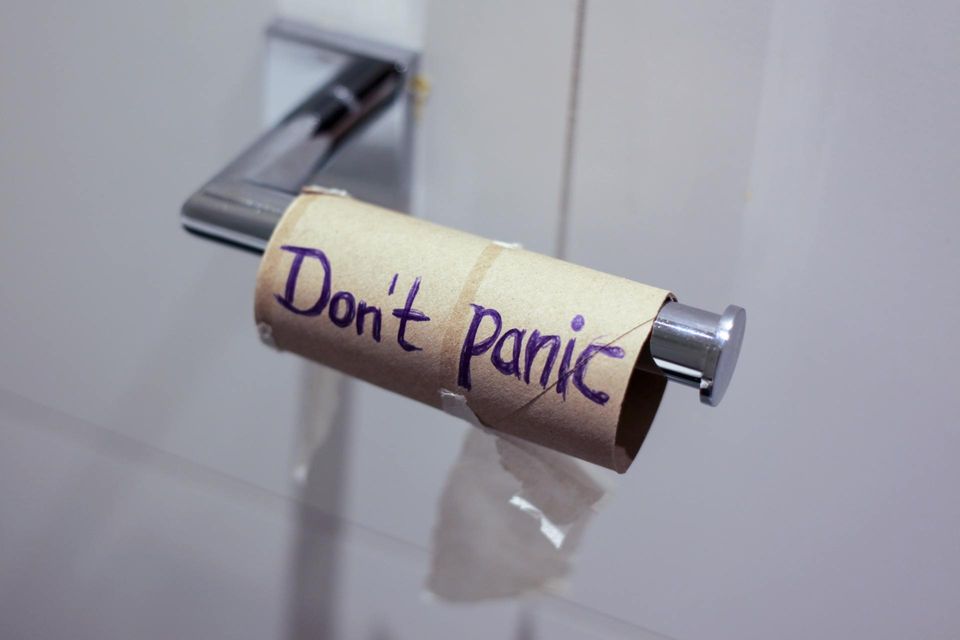THE DURATION IS UNKNOWN BUT SOME THINGS ARE CERTAIN - RETHINK GOING TO CASH

Market Update
The S&P 500 fell 15% last week to 2,304.92. It was the worst week for the index since the week ending 10 October 2008. The Volatility Index (VIX) peaked at 85.47 on Wednesday; a level not seen since 2008. The average for the VIX during the last decade is around 15. Volatility spikes when investors panic. Investors panic when uncertainty overwhelms them. Last week, bonds and other credit assets sold off along with stocks. The high-yield spread continued to widen. It’s now at 9.82% which means that high-yield debt has a yield 9.82% above a similar term Treasury bond. The average spread between high-yield and Treasuries is approximately 5.5%. The spread typically peaks around 10% during recessions although it widened to almost 20% during the Great Recession. The high-yield spread is the widest it’s been since October 2002 when it reached 10.59%. We wrote last week to expect a relief rally in stocks. It didn’t happen. We will have one at some point. Fear will eventually give way to greed and enough investors will start to buy that the market will begin moving higher for a while. We just don’t know when.
Our initial downside target for the S&P 500 was the December 2018 low at 2346. The index traded to a low of 2280.52 on Wednesday. The next downside target is 2,000. The market traded between 2,000 and 2,200 for much of the time between late 2014 and the middle of 2016. Investors may step in to buy at those levels. Goldman Sachs has 2,000 as its downside target for the bear market; a decline of about 40%. The most likely worst case is a decline to around 1300, another 44% decline from current levels. A drop to 1300 would represent a 76% retracement of the entire bull market that started in March of 2009. The total decline would be 62%, not much more than the 58% decline experienced during the last bear market. The most likely worst-case won’t happen without a very deep, extended contraction in the economy.
A relief rally will happen eventually; they almost always do. A relief rally starting from current levels might take the market back to 2550-2710. Relief rallies don’t last. Any rally will be met with selling as investors who didn’t get out the first time use the bounce to reduce equity exposure. Typically, relief rallies last anywhere from a few days to a few weeks. It’s unlikely that the bear market is almost over. Plan on it lasting at least a few more months.
Economic Update
Last week we had our first glimpse of the economic damage resulting from COVID-19. The New York Fed’s Empire manufacturing survey fell to negative 21.5 in March, down from a positive 12.9 in February, the biggest one-month drop in its history.
There is a full slate of economic reports this week, but most won’t shed any light on March activity. The Chicago Fed National Activity (CFNAI) index is for February for instance. However, the March Manufacturing PMI comes out Tuesday as does the Services PMI. As well, the weekly jobless reading on Thursday is likely to be ugly. March consumer sentiment comes out Friday and will also give us some insight into the impact of COVID-19 on the economy. The consensus among economists is for recession. Goldman Sachs is forecasting a 24% contraction in the second quarter. Deutsche Bank is calling for a 12.9% contraction. There is substantial disagreement on the duration of the recession. Predictions range from sharp but short to one lasting well into next year.
Rethink going to cash
Diversification does work in the long run. Correlations between asset classes rise toward 1 during a crisis. (A correlation of 1 means two assets move together in sync.). Most asset classes are down in 2020. International, emerging, and U.S. stock markets are all down an almost identical amount (29% to 30%). Gold, bonds, real estate are all down. There’s nowhere to hide except cash right now. The problem with moving to cash is that there’s a real risk of locking in losses and missing the subsequent recovery. Market timing just doesn’t work. Better to stay in your diversified portfolio. Better to wait for opportunities to buy cheap assets such as (sometime in the next few months) high yield bonds. Better to wait for opportunities to buy good companies with solid balance sheets that are paying a nice dividend when they’re just too cheap to ignore.
Regards,
Christopher R Norwood, CFA
Chief Market Strategist











